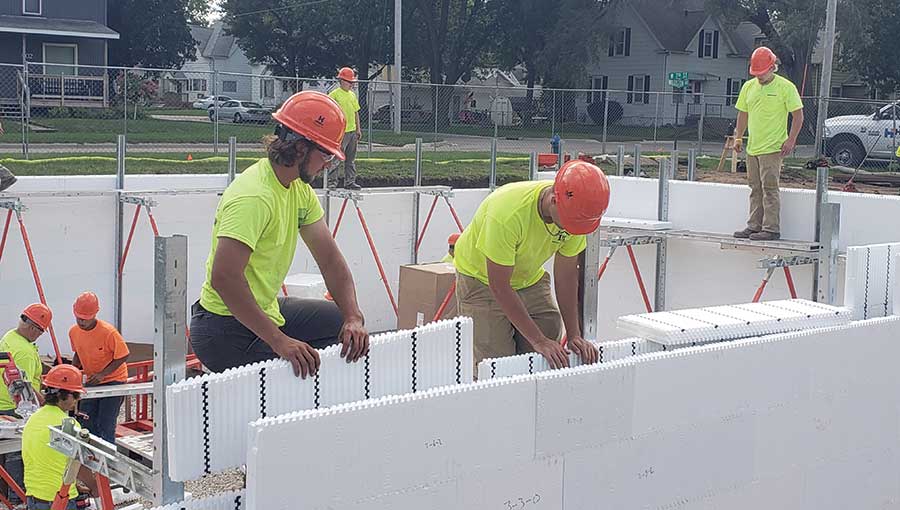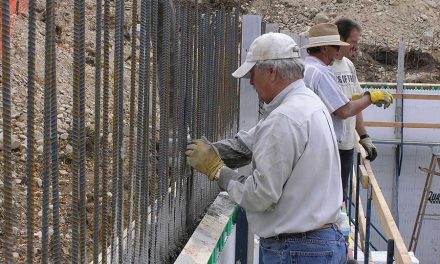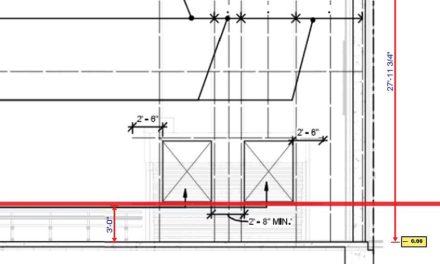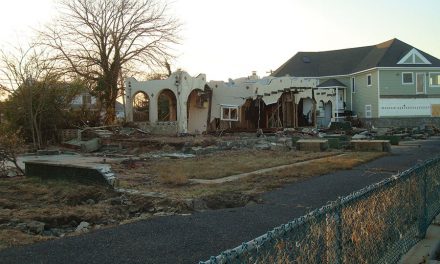Nick Samuelson and Cale Neuendorf install ICF panels during the setting of the top of the basement walls.
By Vanessa Salvia
Benjamin Strickert and Craig Clark are doing great things with the Associate of Applied Science Construction program at Hawkeye Community College in Waterloo, Iowa. The school’s Sustainable Construction and Design Program is preparing students to design and construct sustainable and highly energy-efficient residences, and it is the only two-year AAS program globally to receive the U.S. Department of Energy’s Zero Energy Design Designation. Part of their building design is to use ICF construction for the foundation and above grade exterior walls. Not only are the students learning about the advantages of ICF construction, but they are also actually building a complete home as part of their coursework.
As Lee Shepard, concrete promotions director for the Iowa Concrete Paving Association and the Iowa Ready Mixed Concrete Association, explained, “I don’t know of any other colleges in the country that build above-ground ICF as part of their construction trades program. The ones that I know of that incorporate ICFs typically just utilize them for the foundations only.”
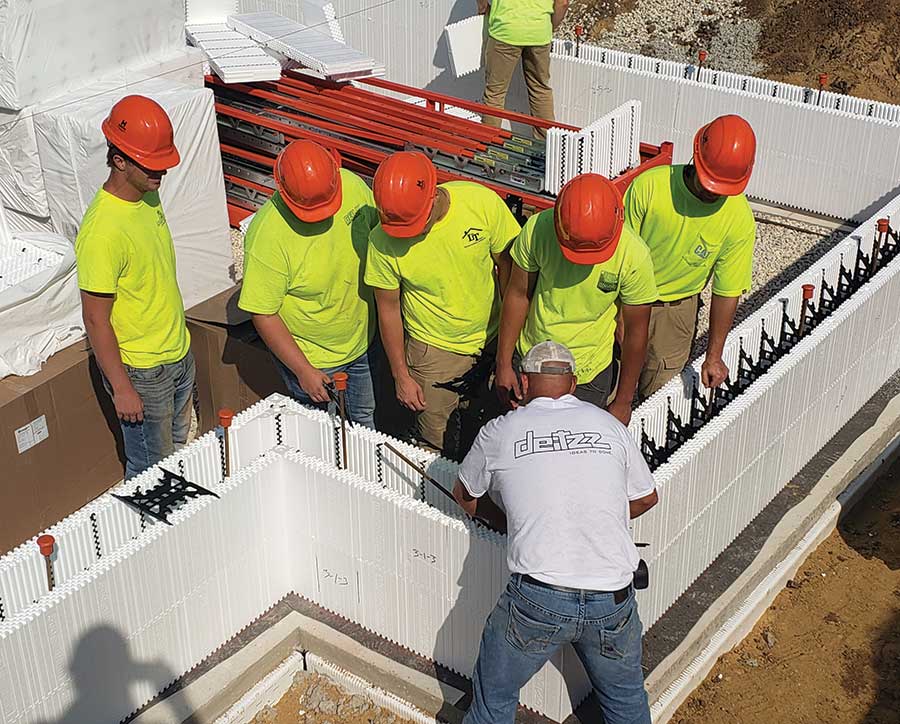
Daren Dietz instructs Adam Greiner, Gavin Sims, Garrett Kurtenbach, Nick Samuelson, and Cale Neuendorf how to assemble the bottom few courses of the ICF foundation walls. Photos courtesy of Benjamin Strickert
Ten years ago, the school saw a demand for construction workers in the area and started this program along with an alternative energy program at the same time. The program offers a two-year applied science associate degree in sustainable construction and design. This year they will be building their fifth house, and the third completely ICF house. “Each year with the students we build a house from start to finish, pretty much 100% student-built,” Strickert says. At the time that we spoke, the students had run the excavator to dig the hole, and by the end they will be putting on the crown molding.”
Kirk Drew is a 23-year-old second-year student in the program. He started working in construction after high school while taking online business classes, and signed up for the program to increase his skills. “I think the ICF is really cool because it’s a form in itself instead of having to use so much lumber, and it’s already insulated,” Drew says. “I hope to actually have an ICF house someday.”
Drew says he has enjoyed seeing the tangible results of building something once the job is done. He isn’t yet sure if he wants to open his own construction company or advance to project management, but for now he is happy to be gaining experience for the future. “Whatever company I work for, I hope to give them another aspect of having that knowledge of ICF and what it can do,” he says. “Hopefully, they would choose to do a couple houses that way or at least have it as an option.”
Incorporating Building Science
Strickert utilizes IntegraSpec ICF and appreciates many of its unique features. IntegraSpec is a panelized system, not a block system. “They have a modular inside and outside panel, and then you decide how thick the wall is by using different size web spacers between them,” explains Strickert. He uses 8-inch spacers for the basement walls, then switches to 6-inch above grade. The system’s efficiency minimizes waste while saving on shipping costs. IntegraSpec also has a foam window and door buck system that dovetails into the panels. Since that eliminates a void, Strickert says there’s less energy transferring through the assembly around the windows and doors.
Strickert was a builder with experience in ICF before he helped start this program. Darin Dietz, partner in Larry Elwood Concrete out of Mason City, Iowa, is an advisor to the program (Dietz has won several ICF Builder Awards). Prior to incorporating the whole-house structure into the curriculum, Strickert and the students built two ICF foundations with wood-framed construction on the rest of the home. “But due to costs and wanting to make sure that students are getting a well-rounded education, we had not pulled the trigger on building a complete ICF house,” he says. “Then two years ago, when the price of wood got so outrageous, that made the decision to go ICF the whole way up easy.”
Strickert says that another thing that is unique about the program is that they delve deeply into building science, looking at how they’re using materials, how energy transfers through materials, and more, instead of just teaching the students how to build a house the way past generations of builders have. “We’re really involved in the science and thinking about things like thermal mass,” Strickert says. “Using ICF really drives that home and students can see the benefits.”
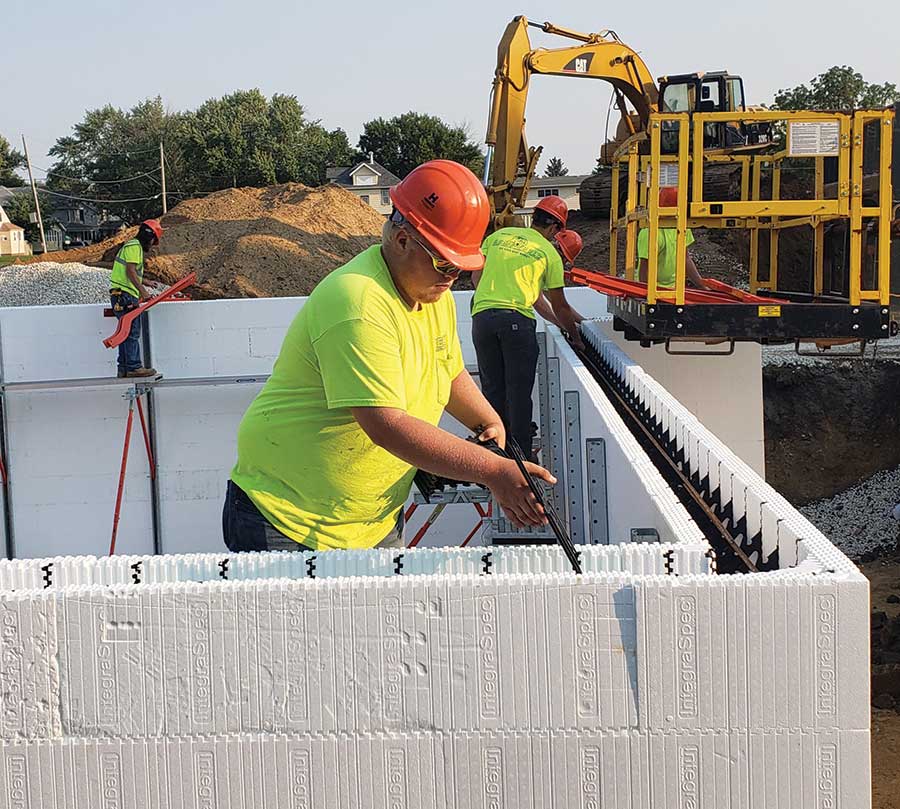
Gavin Sims installs 8-inch ties on the top course of ICF basement walls, while Garrett Kurtenbach and Nolan Miehe install the last course of horizontal rebar.
Last year, the school purchased a city block in Waterloo, and plans to build five 100% ICF spec homes over the next five years, that will also all be net zero energy. The homes will have 1,324 square feet of finished living space on the main level and 1,150 square feet of finished living space in the basement. “We’re pushing the envelope, not just with the ICF, but with the way that we air seal with our window and door packages, with our heating and cooling modes, our total insulation values, and solar offsets, residential energy auditing with blower door tests, sizing the heating and cooling equipment for the houses,” Strickert says. “We’re pushing energy independence.”
The team closely monitors the energy consumption of the spec homes for continued teaching opportunities. Strickert says he fields calls from contractors who want to know how the team is developing the program and how they can learn to do ICF construction. Strickert says ICF is not new, but unless contractors have experience with it or exposure to it from someone they know, it can still feel too unfamiliar to attempt.
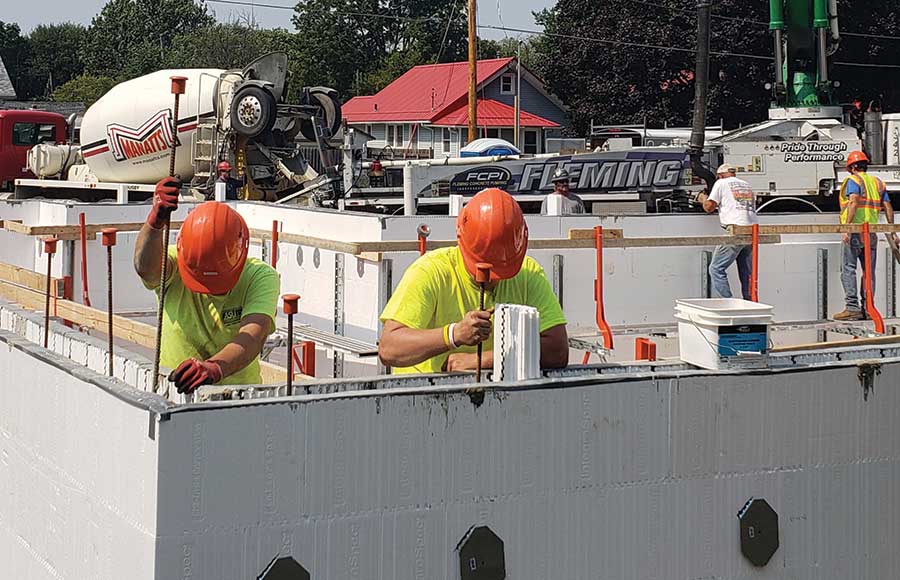
Johnathan Westwater and Lane Quandahl install vertical rebar during the last round of pouring the basement level of ICF.
A Successful Program
The program maxes out their cap of 20 students each year, and graduates about 60%. Strickert says this year, 17 out of the 20 are entering the program right out of high school. He says most of the graduates stay in the residential sector and for the most part stay near Waterloo. Some students go into building science, and now one graduate works for one of the local energy companies that monitors and inspects the energy efficiency for all new builds in the region.
By the third week of the coursework, the students are setting ICF walls for the foundation level of the house. So even if a student doesn’t complete the program, they still leave with more ICF experience and exposure than they had before. “When they’re out working, they have the experience of being around ICF even if that employer is not building with ICF,” Strickert says. “Maybe they come on a job that somebody subcontracted, and they have knowledge instead of just saying, ‘I’ve never been around this before.'”
Hawkeye Community College
The website for his program is https://www.hawkeyecollege.edu/programs/
sustainable-construction-and-design. You can follow them on Facebook: Sustainable Construction and Design at Hawkeye Community College.

